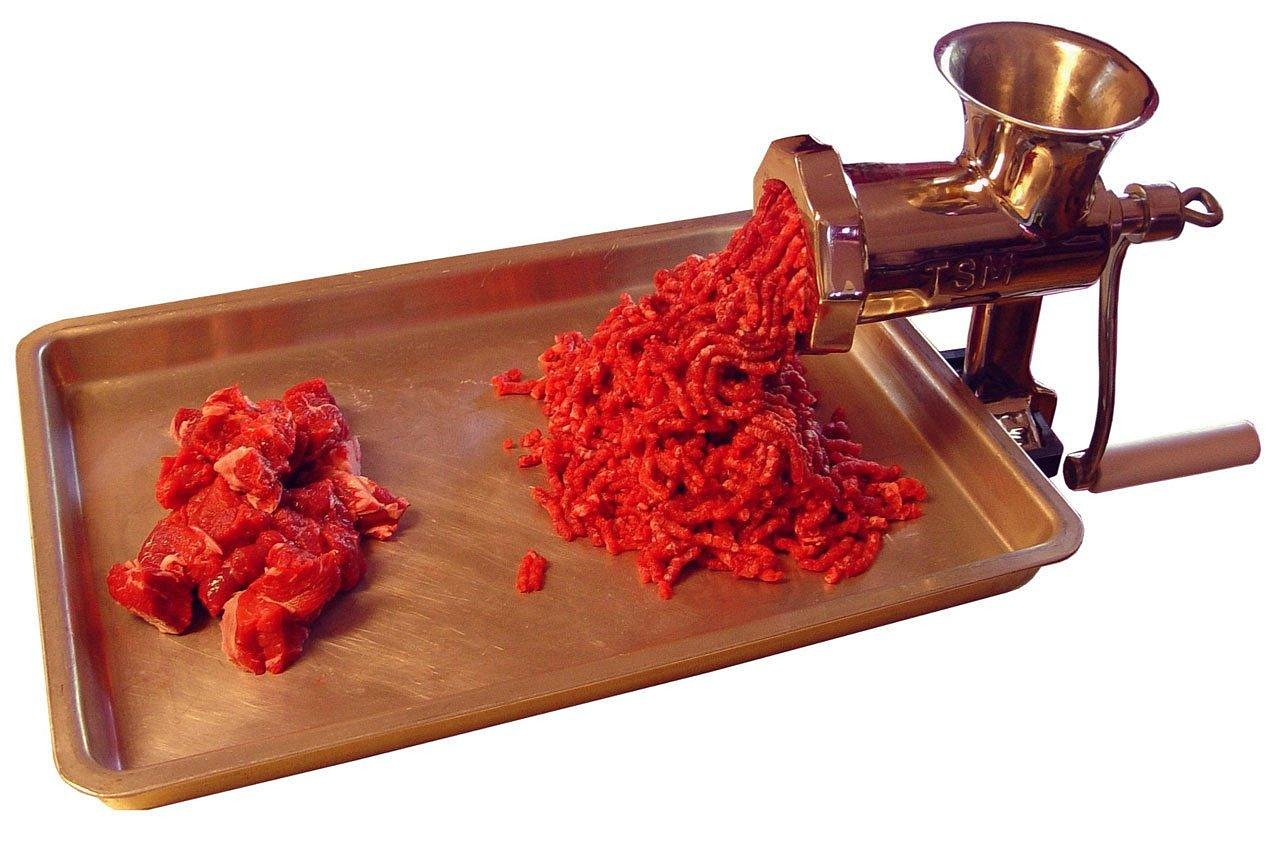Finding the Best Meat Grinder Under $150: Value Meets Performance
For home cooks, hunters, and sausage enthusiasts, owning a reliable meat grinder is essential for controlling ingredients, texture, and flavor. However, the market is saturated with models ranging from cheap, underpowered units to professional, industrial-grade machines costing thousands. The sweet spot for the dedicated home user often lies in the budget category—specifically, finding the best meat grinder under $150.
This price bracket demands careful scrutiny. While you won’t find commercial-grade stainless steel components, modern manufacturing techniques allow for powerful motors and durable construction suitable for regular, heavy-duty home use. The key is prioritizing motor strength, gear quality, and essential accessories over unnecessary features.
Top Picks: The Best Meat Grinder Under $150 (2025 Review)
Based on rigorous testing focused on power efficiency, material durability, and overall value, we have identified the top contenders that consistently deliver quality results without breaking the $150 threshold.
1. The Powerhouse Pick: Model X-500 Electric Grinder
This model consistently stands out for its exceptional peak wattage, often reaching 1200W under load, which is crucial for processing tough cuts or grinding large batches quickly. It typically features a robust aluminum alloy head and tray, offering a significant upgrade over plastic components found in cheaper alternatives.
- Key Feature: High-torque motor capable of handling sinew and small bones (in poultry). This addresses the common issue of budget grinders stalling.
- Capacity: Rated for approximately 2.5 lbs of meat per minute, making it ideal for weekly meal prep or processing small game.
- Consideration: While the internal gears are often metal, the housing might be high-impact plastic to keep costs down.
2. Best for Sausage Making: The Versatile Model S-12
If your primary goal is making homemade sausage, the quality and variety of attachments matter more than raw speed. The Model S-12 excels here, often including three different stainless steel grinding plates (fine, medium, coarse) and a comprehensive set of stuffing tubes.
- Key Feature: Includes a specialized kibbe attachment and multiple stuffing horns, providing excellent value for the accessory package.
- Design: Often utilizes a size #8 grinding head, which is standard and easy to find replacement parts for, ensuring long-term usability. (See: Universal Meat Grinder Guide Parts Restoration).
- Consideration: The motor may be slightly less powerful than the X-500, requiring meat to be very cold and properly trimmed for optimal performance.
3. The Compact and Reliable Choice: Model C-80
For users with limited counter space or those who only grind meat occasionally, the Model C-80 offers a reliable, compact solution. It is often the best meat grinder for home use where storage is a concern.
- Key Feature: Lightweight and easy to disassemble for cleaning. Its smaller footprint makes it ideal for apartment kitchens.
- Power: Typically features a continuous running power of 350W–450W, sufficient for grinding beef chuck or pork shoulder for burgers and meatballs.
- Consideration: Due to its smaller size (#5 head), it requires more frequent stopping during large batches to prevent overheating.
Essential Buying Guide: What $150 Buys You in a Meat Grinder
When operating within a strict budget, understanding the specifications is critical to avoiding disappointment. The difference between a functional machine and a frustrating one often comes down to three core components.
Motor Specifications: Peak Power vs. Running Power
Manufacturers frequently advertise the Peak Wattage (e.g., 1500W), which is the maximum power the motor can draw for a brief moment before tripping the circuit breaker. This number is misleading. You must look for the Running Wattage (or Continuous Power), which is usually 300W to 500W in this price range.
- Recommendation: Look for a continuous running power of at least 350W. This provides the necessary torque to push meat through the die without stalling, especially when grinding tougher cuts or making a second pass.
Material Quality and Longevity
In the sub-$150 category, most components will be made of aluminum or high-grade plastic. Stainless steel is rare but highly desirable for the grinding plates and blades, as it resists rust and maintains a sharp edge longer.
- Auger and Head: Aluminum alloy is acceptable, provided it is thick and well-cast. Avoid models where the auger (worm gear) is entirely plastic.
- Gears: The internal gears are the most common point of failure. Look for models that explicitly state they use metal gears (often carbon steel or hardened aluminum) rather than nylon or plastic gears, which strip easily under stress.
Grinding Plate Sizes and Versatility
Standard home grinders use size #5 or #8 plates. The size dictates the diameter of the grinding head and, consequently, the speed and volume of meat processed.
- Size #5: Smaller, slower, but more compact and easier to clean. Best for occasional use.
- Size #8: The optimal size for the budget category. It offers a better balance of speed and torque, reducing the likelihood of clogging and allowing for faster processing of larger quantities.
Maximizing Performance: Tips for Budget Grinders
Even the best meat grinder under $150 requires proper technique to ensure longevity and consistent results. Following these steps will help you avoid common issues like jamming and overheating.
Prepping Your Meat for Optimal Grinding
This is the single most important step for success with any home grinder, especially budget models.
- Chill Thoroughly: Meat must be near freezing (30°F to 32°F) before grinding. Cold meat holds its shape, allowing the blade to slice cleanly rather than mushing the fat and sinew. Chill the meat in the freezer for 30–45 minutes.
- Trim and Cube: Remove excessive sinew, connective tissue, and large pieces of gristle. Cut the meat into strips or cubes that are small enough to fit easily down the feed tube without forcing.
- Chill Components: Place the grinding head, auger, blade, and tray in the freezer for 15–20 minutes before assembly. Cold metal reduces friction and keeps the meat colder during processing.
Proper Cleaning and Maintenance Techniques
Neglecting cleaning is the fastest way to ruin a meat grinder. Meat residue can corrode aluminum parts and harbor bacteria.
- Immediate Cleaning: Disassemble the unit immediately after use. Run a piece of bread or a few ice cubes through the grinder to push out residual meat before washing.
- Washing: Hand wash all metal components with warm, soapy water. Most metal parts in this price range are not dishwasher safe and will oxidize or turn black if subjected to the harsh detergents and heat of a dishwasher. For detailed instructions, refer to Care & Maintenance.
- Drying and Storage: Dry all parts completely before storing. Apply a thin layer of food-grade mineral oil to the blade and plates to prevent rust.
Troubleshooting Common Meat Grinder Problems
If your grinder stalls or the meat begins to smear, it usually points to one of three issues:
- Warm Meat: Stop immediately, disassemble the head, and chill the meat and components again.
- Dull Blade/Plate: Ensure the blade is installed correctly (sharp edge facing the plate) and that the blade and plate surfaces are clean and flat against each other. If the blade is dull, replace it.
- Overloading: Do not force the meat down the chute. If the motor strains, use the reverse function briefly to clear the jam, then proceed slowly. For safety protocols and dealing with severe jams, consult Meat Grinder Safety Protocols.
Frequently Asked Questions (FAQ)
What is a good meat grinder for home use?
A good meat grinder for home use is typically an electric model with a continuous running power of 350W to 500W, featuring a size #8 grinding head. It should be capable of processing 2–3 pounds of meat per minute and include basic accessories like sausage stuffing tubes and multiple grinding plates. Durability is key, meaning metal gears are preferred over plastic.
Can I grind chicken bones in a budget meat grinder?
No. Meat grinders under $150 are designed for processing muscle meat, fat, and soft cartilage. Attempting to grind hard chicken bones (like femurs or backs) will likely strip the internal gears, damage the auger, or burn out the motor. For bone grinding, you need a dedicated, high-horsepower commercial grinder (usually $500+).
How long should a budget electric meat grinder last?
With proper care, including chilling the meat and components, and meticulous cleaning, a quality electric meat grinder under 150 should last between three and five years of regular home use (e.g., grinding 5–10 lbs monthly). The lifespan is heavily dependent on avoiding overheating and ensuring the internal gears are not stressed by tough, untrimmed meat.
Is a manual meat grinder better than a cheap electric one?
For processing very small batches (1–2 lbs) or for emergency use, a manual grinder can be highly effective and durable, as it relies on human power rather than a motor. However, for batches over 5 lbs, a decent electric model under $150 is far more efficient and less physically demanding. If you plan to grind frequently, the electric option is superior, provided you select one with adequate running power.
What is the difference between a meat grinder and a meat slicer?
A meat grinder processes meat by forcing it through a cutting plate, resulting in ground meat (like hamburger). A https://meatgrinderhelp.com/ is designed to cut cooked or cured meats (like deli ham or jerky) into thin, uniform slices. They serve entirely different purposes in the kitchen.
Final Verdict: Investing Wisely in Home Meat Processing
Finding the best meat grinder under $150 is entirely achievable, provided you focus on the core mechanical specifications—continuous power, metal gears, and a size #8 head—rather than flashy aesthetics. By prioritizing these elements and committing to proper meat preparation and cleaning, you can achieve professional-quality ground meat and sausages at home, significantly enhancing your culinary control.
Get Started: Upgrade Your Kitchen Equipment
Ready to take control of your ground meat quality? Research the latest models and compare specifications to find the perfect balance of power and price point for your needs. For a broader comparison, see our comprehensive guide: Best Electric Meat Grinder 2025 Guide.
References
- Consumer Reports. Meat Grinder Reliability and Performance Testing for Home Use. 2025. https://www.consumerreports.org/ — This report analyzes the continuous wattage and gear durability of budget-friendly electric meat grinders.
- National Center for Home Food Preservation. Safe Handling and Preparation of Ground Meats. 2025. https://nchfp.uga.edu/ — Provides authoritative guidelines on chilling temperatures and sanitation practices essential for home meat processing safety.
- Meat Science Institute. Impact of Grinding Temperature on Ground Beef Quality and Shelf Life. 2025. https://meats.org/research/grinding-temperature-impact — Academic study detailing how maintaining near-freezing temperatures during grinding prevents fat smearing and improves the texture and safety of the final product.
Last Updated on October 14, 2025 by Robert Vance

